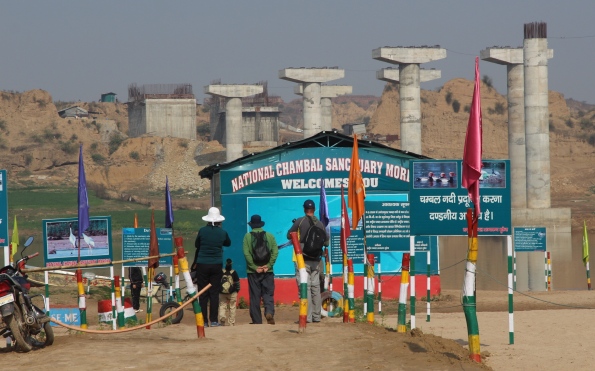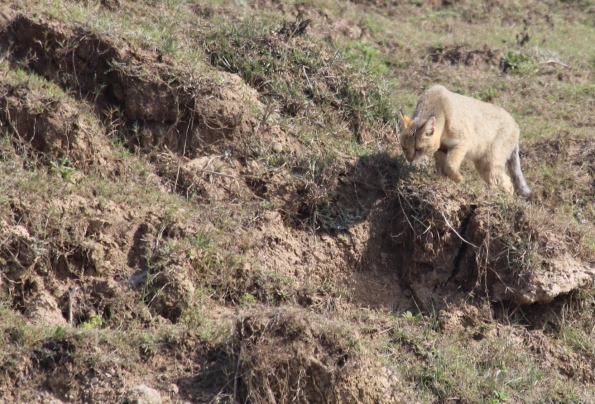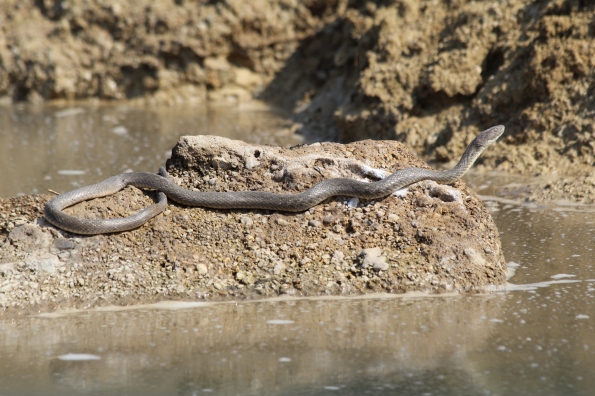Gharials—a little known but critically endangered crocodile that doesn’t eat people
Travel is educational.
What an understatement. Travel has taken me places that don’t appear on most maps, allowed me to meet people with extraordinary stories, put me in front of all sorts of exotic and fantastic foods, and given me the chance to see rare animals.
The gharial (sometimes called a gavial or fish-eating crocodile) is a recent example. For starters, I’d never heard of this species of crocodile, which also meant I had no idea that wild gharials are critically endangered.
In the mid-1940s, these fish-eaters were widespread across the Indian subcontinent. They lived in every major river and their population was estimated to be between 5000 and 10,000. By 1997, there were fewer than 500. Over the next nine years, the number of gharials living in the wild fell by another 58 per cent.
Today there are thought to be no more than 200 breeding pairs in the wild, with most of them in the National Chambal River Sanctuary.
Gharials don’t even kill or eat people! So how did this drastic decline happen and in such a short space of time? And how can it be stopped?
There are many causes. Gharials are hunted for skins and indigenous medicine, their eggs are taken for food, they are trapped in fishermen’s gill nets, their riverine habitat is diminishing and even pollution gets them.
As for a cure, things are happening slowly. When numbers fell sharply in the 1960s and 1970s, the Indian Government added gharials to the Wildlife Protection Act 1972.
In 2010, the then minister for Environment and Forests announced a tri-state committee to manage, research and protect gharials within the 1600 square kilometres of the national sanctuary on the Chambal River.
We first saw gharials on the Chambal where it runs between the states of Rajasthan and Madhya Pradesh. We spent several hours in a boat cruising up and down the river, seeing gharials, mugger crocodiles and a whole range of other wildlife.
A jungle cat on the hunt was an unexpected sighting, along with a checkered keelback snake basking in the sun.
About a month later, we saw more gharials in the Gharial Research and Conservation Unit within the Satkosia Tiger Reserve in the eastern state of Orissa. Limited numbers of gharials live in the Mahanadi River there, but for some reason do not breed. However, the research unit conducts a somewhat successful breeding program in which the young are released into the wild.
A bit about gharials
Gharials are one of three crocodilians native to India, with the other two being the mugger and saltwater crocodiles. They are among the longest of crocodilians, with males measuring up to 6 metres or 20 feet in length and weighing up to 160 kilograms or 350 pounds.
Because they are primarily fish eaters, the gharials are characterised their long, thin snouts and more than 100 sharp, interlocking teeth. The male, once he reaches maturity at about age 13, has a distinctive knob (called a boss or a ghara) that begins to grow on the end of his snout.
Gharials usually mate in December and January and then dig nests in the sand for eggs in March and April. Females can lay anywhere from 20 to 95 eggs. The young hatch in July, just before the onset of the monsoon.
As for me, I feel lucky to have seen some in the wild.












I had no idea that these crocodiles existed. I learn so much from my fellow bloggers. Thank you.
LikeLike
Our fellow bloggers are great sources of knowledge.
LikeLiked by 1 person
It’s amazing how we creatures adapt – one look at the snouts, and you know these crocs have a special diet. Lovely piece of education!
LikeLike
Thank you. And you are so right about those snouts—gharials are fish-eating machines.
LikeLike
Thanks for such a great and informative post!
LikeLike
Thanks so much for stopping by.
LikeLike
What a great post! I never heard about Gharials. Love the snouts which makes them much cuter than other crocodiles. But as far as snouts go, in my book, yours is the best for poking around in places that are intriguing.
LikeLike
Haha! Maybe I should learn to keep my snout out of other people’s business! 🙂 On the other hand, maybe it explains why I’ve owned schnauzers.
LikeLike
Your pics are excellent! To see that many animals is amazing to me. What a cruise that must have been.
LikeLike
Thanks Mike. It really was an amazing couple of hours.
LikeLike
Great publicity for an endangered species a well as super photos for us would be travellers who have not ventured as far as you. Keep up the good work.
LikeLike
Thanks Dorothy. I must say I was pleased to pay the entry/boat fee because it goes to help saving these interesting (and probably prehistoric) creatures.
LikeLike
Super educational post! I can’t believe the places you get up to. Were the cruise specifically for spotting Gharials?
LikeLike
Yes, the cruise was primarily to see the gharials, but if you pay attention you can’t miss seeing all the other animals.
LikeLiked by 1 person
I’d never heard of gharials until I read your post. Thoroughly enjoyed reading all the info. Yes, travel is very educational! And so is reading the blogs of travellers. 🙂
LikeLike
I love reading travellers’ blogs. Also so fascinating.
LikeLike
Hello Crocodile LeggyPeggy,
Did you ever consider jumping into the river and wrestling with a crocodile…. Using duct tape and raising one hand in the air (cowgirl style) and becoming a famous Wild Wild West Australian TV star!
Sy S.
LikeLike
Too funny, Sy. I’ve never thought of doing that but I’m glad you’ve pointed out another good use for duct tape. 🙂
LikeLike
I saw these ‘crocs’ when I did my trip, I never knew they were a protected species or there was so few of them
LikeLike
Glad you saw them too.
LikeLike
it was just the one thoughj 😦
LikeLike
Better than none.
LikeLike
It’s good to know that some crocs are nice and friendlt.
LikeLike
And they have a winning smile!
LikeLike
Absolutely stunning photographs, Leggy Peggy!
LikeLiked by 1 person
Thanks so much. It was a wonderful experience.
LikeLike
Doesn’t eat, but can bite 😂
LikeLiked by 1 person
Yes, they can bite. I wouldn’t go swimming with them. 🙂
LikeLiked by 1 person
Nor do I.
LikeLiked by 1 person